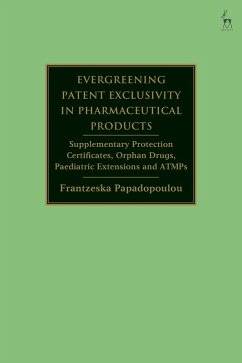This book analyses 4 central pieces of EU pharmaceutical regulation: the Orphan Drugs Regulation, the Paediatric Regulation, the Supplementary Protection Certificate Regulation, and the ATMP (Advanced Therapy Medicinal Products) Regulation. These four regulatory instruments constitute focal points in the pharmaceutical industry's approach to modern business and legal strategy. Their central role is justified by the way these regulatory instruments interact with each other and with the patent system, and by the considerable impact they (as a whole) have for the evergreening of exclusive rights on pharmaceutical products.
The book guides the reader through the latest case law and legislative developments and discusses how these influence strategic legal and business choices in the pharmaceutical industry. It brings to the forefront the often-overlooked significance of the legislative architecture of the EU pharmaceutical regulatory framework, and evaluates its results through the lens of the efficiency test.
The book is an important resource for academics and practitioners interested in updated case law and an in-depth analysis of these four regulations. It is also important for those interested in legislative studies, evaluation of legislation and a critical approach to legislative architecture.
The book guides the reader through the latest case law and legislative developments and discusses how these influence strategic legal and business choices in the pharmaceutical industry. It brings to the forefront the often-overlooked significance of the legislative architecture of the EU pharmaceutical regulatory framework, and evaluates its results through the lens of the efficiency test.
The book is an important resource for academics and practitioners interested in updated case law and an in-depth analysis of these four regulations. It is also important for those interested in legislative studies, evaluation of legislation and a critical approach to legislative architecture.


